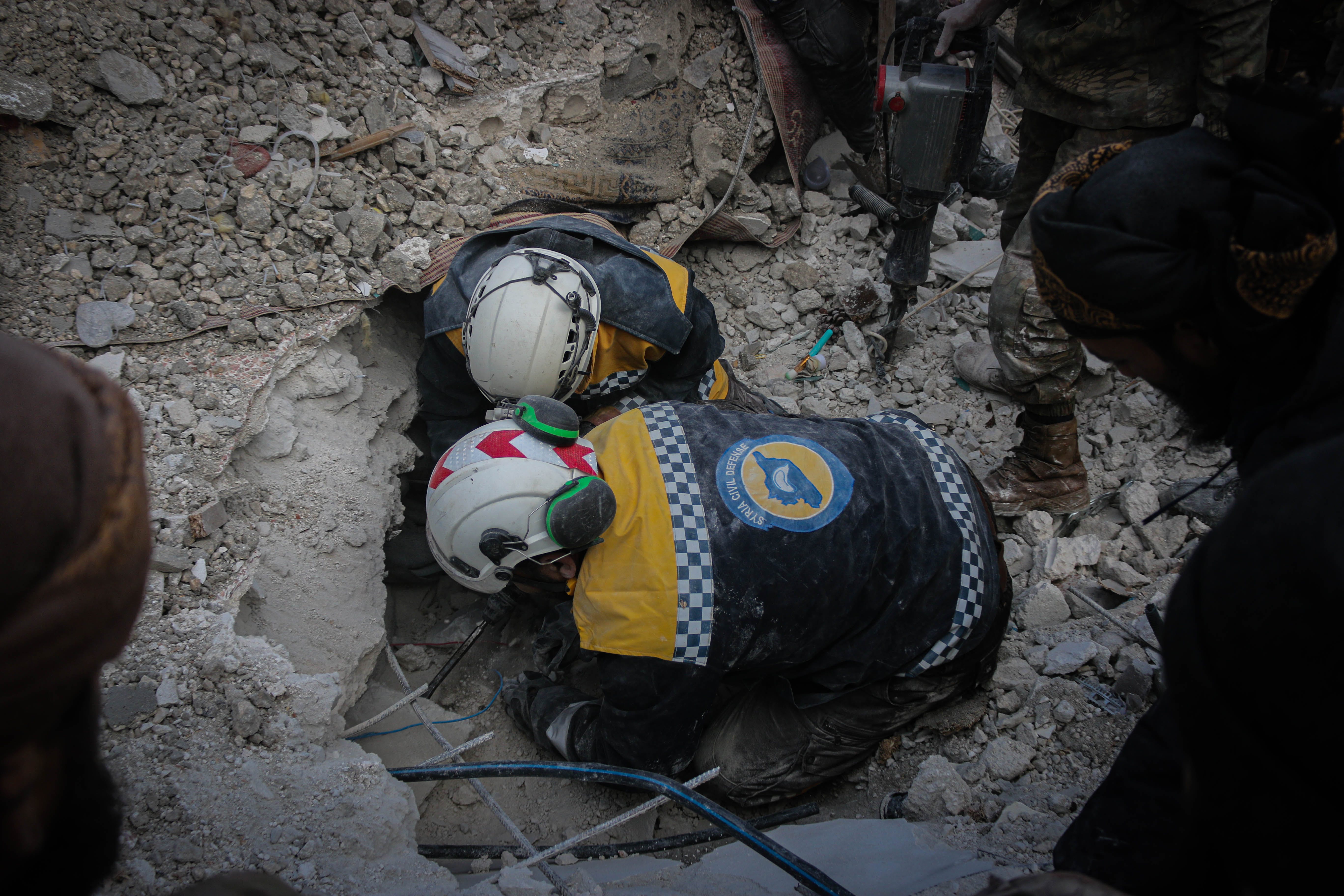Coal. Its omission from most things makes them better. The atmosphere, the holiday stockings of expectant children, I could go on. But its erasure from the recent Pacific statement on climate change at Australia’s demand is quite another story. One that paints a cautionary picture for humanitarianism in the climate change era and should be noted far beyond our backyard.
What happened at the Pacific Islands Forum?
The assembly of eighteen leaders in Tuvalu, focused on climate change, was always going to be tense. Pacific island nations have long been poster-countries of the intersection of humanitarian and environmental advocacy efforts because they are already – and visibly – suffering the impacts of climate change. As delegates arrived, they were met by children who sat submerged in water, singing: Save Tuvalu, save the world. For the forum host community, there was no room for subtlety and one country in particular was in their sights.
Australia is one of the world’s biggest producers and exporters of coal, an industry that more or less enjoys bipartisan national governmental support, and is an important commodity in Australia’s fragile relations with China. Prime Minister Scott Morrison once famously brought a lump of coal into the Australian parliament for show-and-tell. For Australia, any agreement on significant climate action would demand action on coal, and as such could have incurred economic and political costs. For Pacific islander communities, the stakes were their lives, livelihoods and futures.
It wasn’t long before tensions were rising like sea levels. After many hours of negotiation, Australia refused to endorse a statement that called for a faster shift to renewable energy and a promise to phase out coal-fired power. A communique could be drafted, Australia said, but coal was not to be included. New Zealand maintained its pledge to reduce its own emissions but was hesitant to pressure Australia to do the same.
Pacific leaders were uncompromising in their calls for climate action. Given that forum decision-making is run on a consensus basis, it is unsurprising that disagreement between Australia and its island neighbours was insurmountable. It left the forum producing a communique that essentially stated that no concrete action would be taken at all, save for the production of a new report.
Meanwhile, plans continue for a controversial new coal mine in Australia and the climate change time-bomb in the Pacific keeps on ticking.
What does this mean for humanitarians?
Humanitarians respond to the needs of people negatively impacted by disasters. Disasters are caused by climate change. Climate change is caused by emissions. When those responsible for emissions are refusing to slow them, even when their biggest aid recipients are begging them to, surely this causal relationship is obvious enough to justify a chorus of rage from all of us. But aid agencies have been quiet on this one.
Why?
The answer may be more complex than we think. First of all, as humanitarians we tend to put extreme weather events in a Natural Disasters category, grouping together floods, storm surges, earthquakes and the like. This doesn’t just serve as a classification; it shapes how we respond. A ‘natural’ disaster is the opposite of a ‘human made’ one – ie. a conflict – so any human-to-human blame tends to surround corruption, adaptation policies or shoddy building codes, for example, but not the causes of the weather events themselves. And if disasters aren’t anyone’s fault, their international management can be handled with less sensitivity. Action on natural disasters tends to be taken on a long-term basis and overlaps hugely with development work – fertile ground for demonstrating progress towards the almighty ‘humanitarian-development nexus’. Enter climate change and suddenly natural disasters are human-made. Some governments cause them, some feel their impacts, many do both. States are at fault. Interests clash, root causes become politically sensitive and our action in the Natural Disasters model starts to break down. Now, we must behave like we do in war.

Photo: ©UNICEF/NYHQ2014-0440/UNICEF Pacific. On Saturday 14 March 2015, storm damage is seen in Port Vila, capital of Vanuatu.
The murkiness of neutrality
Akin to removing all mentions of arms from peace negotiations, Australia’s behaviour in Tuvalu has demonstrated an ability for donor countries to pick and choose which ‘root causes’ of humanitarian crises are mentionable and which aren’t and as such, which can be addressed meaningfully on an international scale. This isn’t new. Major aid donors always make decisions as part of a foreign policy package deal, even when those policies are fraught with humanitarian conundrums. It’s why we accept aid funding from those financing war efforts. We tend to deal with this by claiming that we’re neutral, independent, not part of the fight. We have permission in war to see our roles as one-dimensional responders, harking back to the Dunant era where the role of humanitarians was to rush onto the field and rescue the injured. We know our place and we respect it.
But then, sometimes we don’t.
Jan Egeland this year called out the hypocrisy of nations trading in arms or raining down shells and bombs on Yemeni civilians while providing agencies with funding to deal with the humanitarian consequences. Yemenis need more than just money ‘to break the vicious cycle of human suffering,’ he said. This could have come with funding consequences for NRC but the risk had obviously been weighed internally and a decision made to say something.
This sort of risk assessment (and ethical soul searching) happens daily in aid agencies. I know it all too well, having worked on humanitarian advocacy in the Syria crisis. Our NGO tended to err on the side of staying quiet, or at least more quiet than we’d have liked. Communications teams agonised over every public statement to ensure neutrality and very few people were authorised to give media interviews. We spoke of effects and not causes. We worked in coalitions for advocacy campaigns about the cessation of fighting or government involvement as that was perceived to come with lower risk. The end goal of this of course was to ensure that our comments didn’t harm our ability to fundraise or physically access war-affected populations, that we could continue to do our jobs as humanitarians.
Agencies must be careful when finding themselves going down such a road with climate change. There may be risks of funding implications when calling out donor governments for emissions, sure; but there is also a weighty environmental and scientific movement on the side of affected populations. Borders don’t bother climate change and the affected population is all of us. The problem is too big for governments to retreat to nationalistic responses that aim to protect their own and they may do well to be reminded that when mass movement of people is on the horizon, it’s useful to have one’s global neighbours on side.
What about our New Way(s) of Working?
When it comes to humanitarianism, it’s also worth thinking about whether many of the sector’s much lauded reform themes can withstand the climate crisis. Australia’s actions in Tuvalu demonstrated an unwillingness to let local actors drive the agenda. What does donors’ ability to ignore root causes of climate disasters mean for the people-centred, long-term approaches that flood our current rhetoric, the ones with local actors in the driver’s seat?
In the Nadi Bay Declaration, released last month, Pacific leaders ask for nothing less than cessation of all coal production in ten years to protect Pacific populations. Calling on Australia to drop plans to use carry-over credits to meet Paris targets, the leaders warn that some of their countries could be uninhabitable by 2030. By flagrantly ignoring that plea, Australia is in essence saying that when it comes to climate change, management of preparedness and risk are not in local hands. This doesn’t bode well for localisation.
Then there’s The Nexus. The New Way of Working is described as multi-year approaches working towards achieving collective outcomes that reduce need, risk and vulnerability, based on the comparative advantage of a diverse range of actors.
Surely any real commitment to reducing need, risk or vulnerability isn’t possible when nation states are refusing to cite their contributions to climate emergencies that can destroy lives and livelihoods en masse. Or perhaps it opens the door for some strong advocacy from humanitarian agencies and coordinators, and environmental experts and economists, on what comparative advantage might look like, when a donor state perhaps can’t immediately see beyond its short-term economics. The climate crisis, like many other issues facing modern humanitarianism, encourages a multi-sectoral approach. In fact, it demands it. Done well, this could produce useful lessons for many aspects of our work about where ‘our’ role starts and ends.

Photo: World Bank / Vlad Sokhin. A destroyed house in Vuna Village, south of Taveuni Island.
Where to from here?
Following the meeting, Tuvalu’s Prime Minister poignantly said ‘I think we should have done more work for our people.’ Humanitarianism must ultimately be about those people, no matter how distracting and fraught the cross-border, highly politicised, high-stakes nature of climate change and its many debates can be.
Vanuatu has asked Australia to come to the next Pacific Islands Forum prepared to make ‘real’ commitments on climate action. ‘In my own country of Vanuatu,’ wrote Foreign Minister Ralph Regenvanu, ‘the population is overwhelmingly engaged in subsistence farming, we are experiencing increases in annual temperatures and dramatic changes to climate variability that impact both the availability of food and water. Climate change projections also forecast an increase in the intensity and frequency of tropical cyclones, like Cyclone Pam which hit Vanuatu in 2015, causing damage equivalent to over 64% of our GDP.’
He did not ask for money. Australia recently pledged half a billion dollars (earmarked from its existing aid funding) for climate adaptation in the Pacific, focusing on infrastructure and renewable energy. Large aid donors have long offered, and agencies taken, money for clean-up operations while collectively sweeping root causes under the rug. But such funding won’t be sufficient to deal with the loss of life, agricultural destruction and mass movement of people (many of whom won’t ever have an option for return, presenting fresh conundrums for UNHCR and policy language around what constitutes a refugee) that unabated climate change all but promises.
The Pacific Islands Forum is a case study but it need not be the norm. Donor governments have an opportunity now to look beyond their siloed aid departments and make holistic, future-facing policy changes in trade, natural resources management, domestic energy and infrastructure. This could have a bigger humanitarian impact than that of which a siloed humanitarian financing system is capable. The humanitarian system remains grossly underfunded but money alone won’t clean up the climate crisis.
It has caused it, after all.
Cover photo: Photo: World Bank / Vlad Sokhin.






